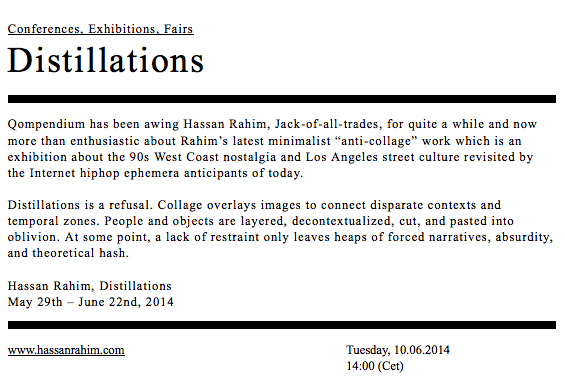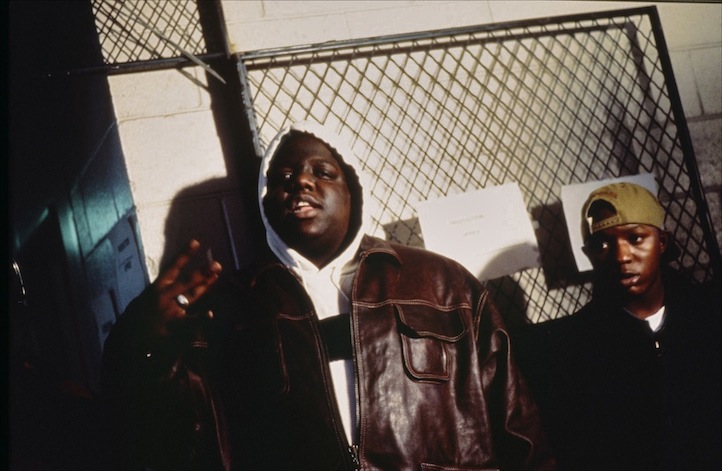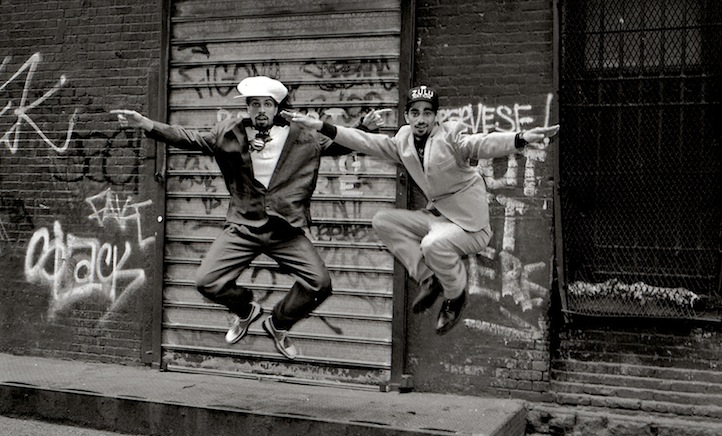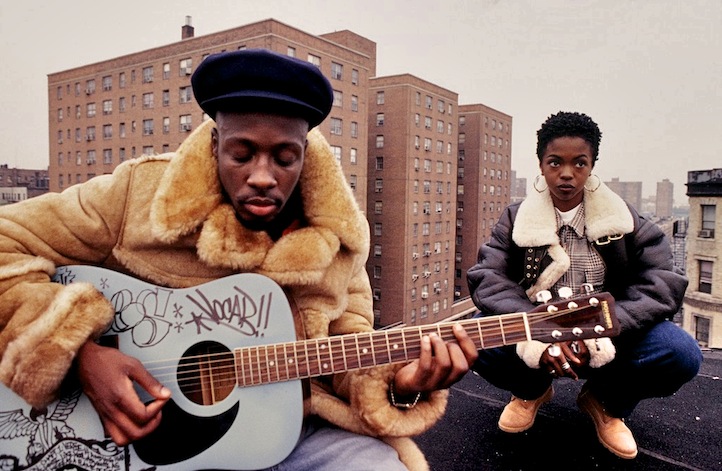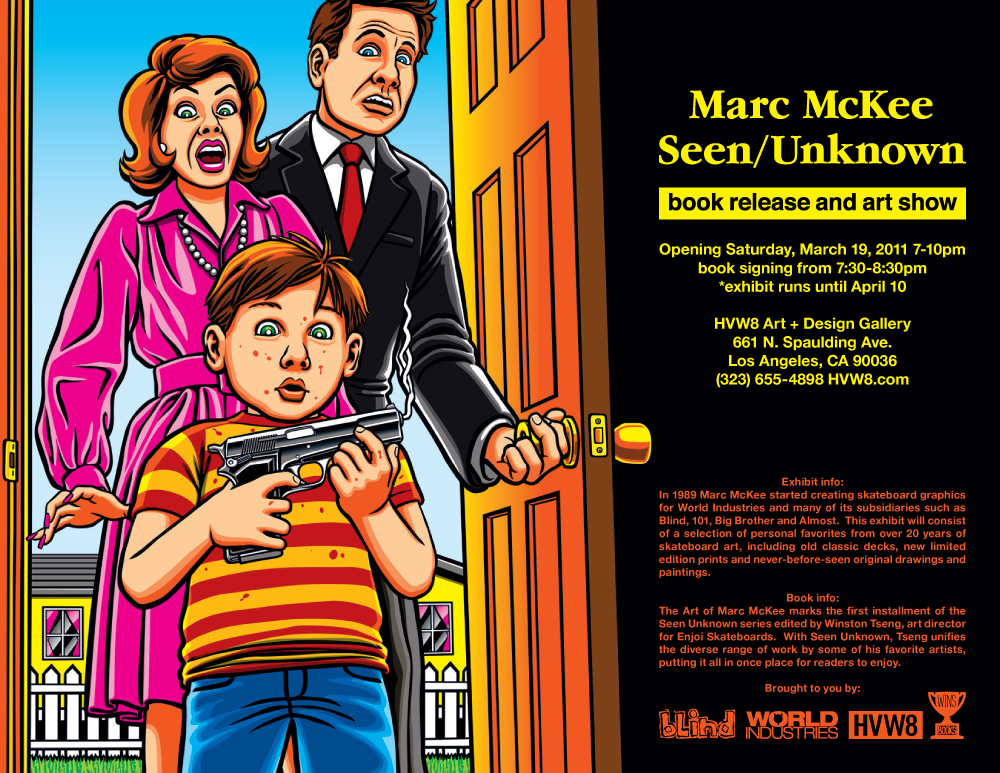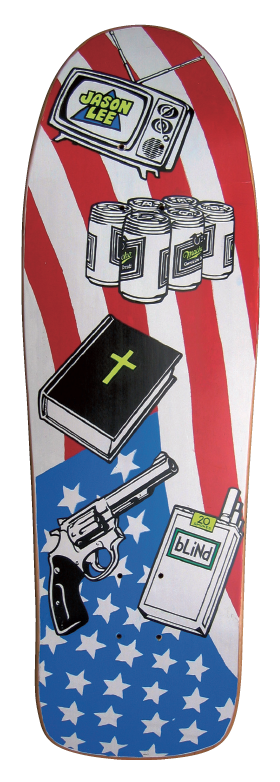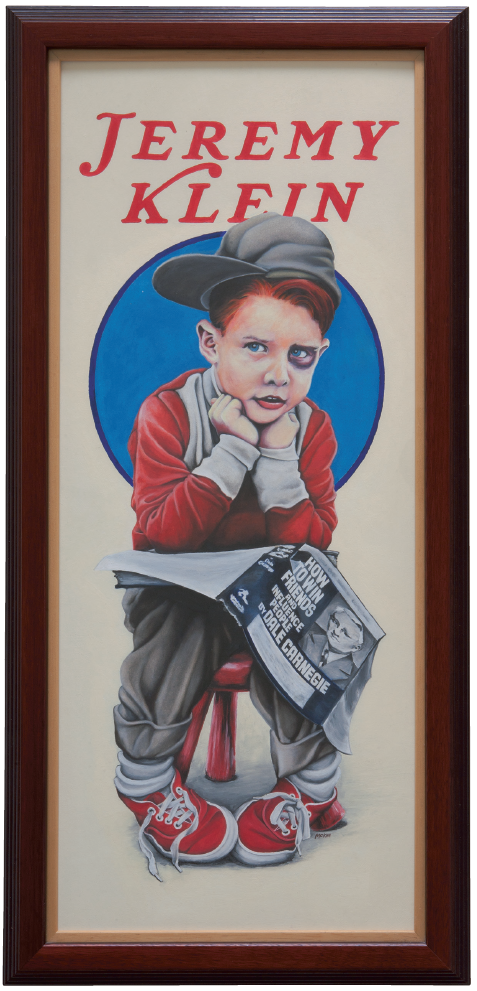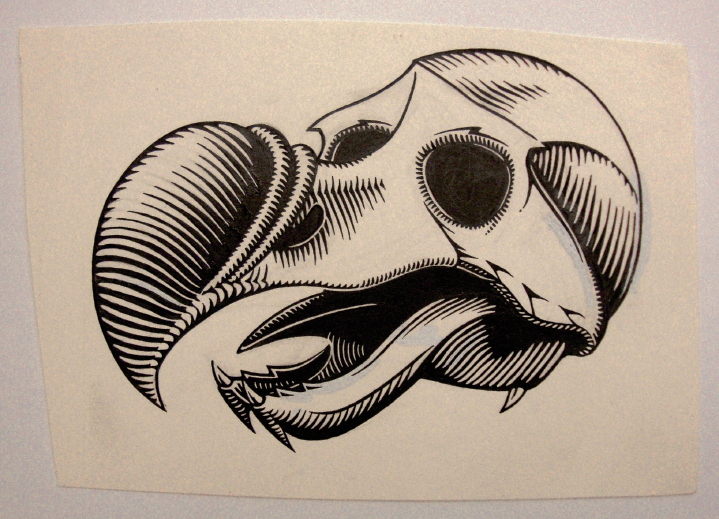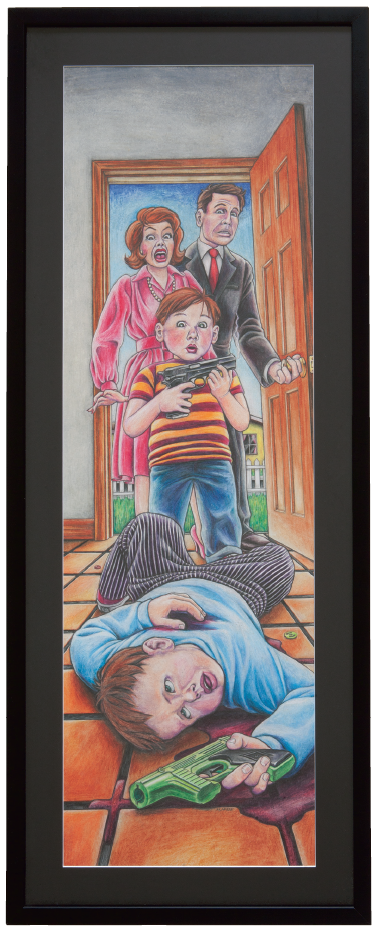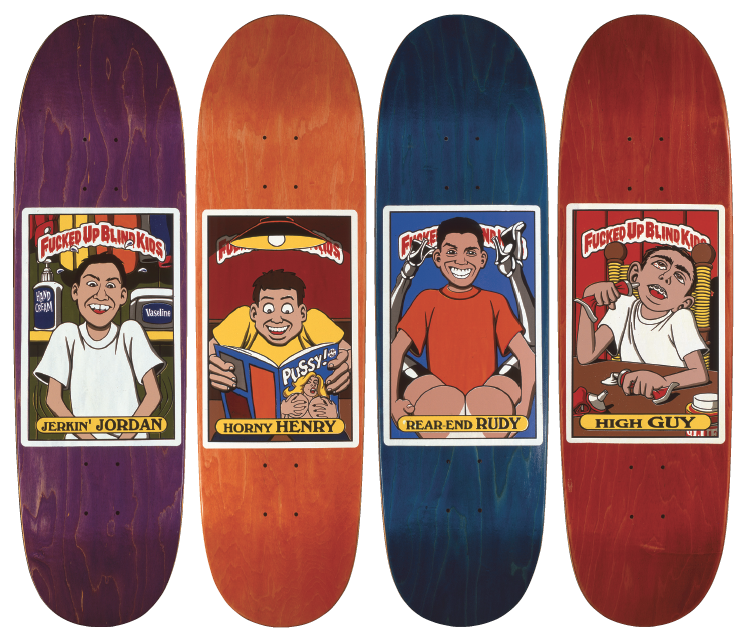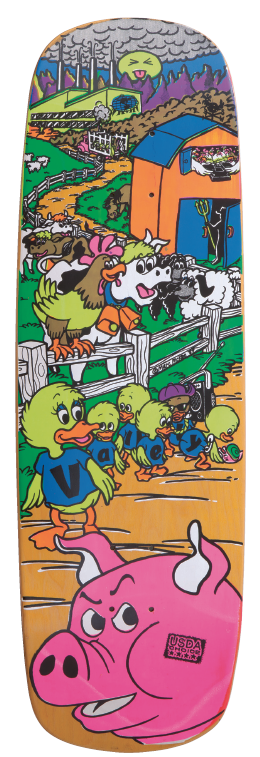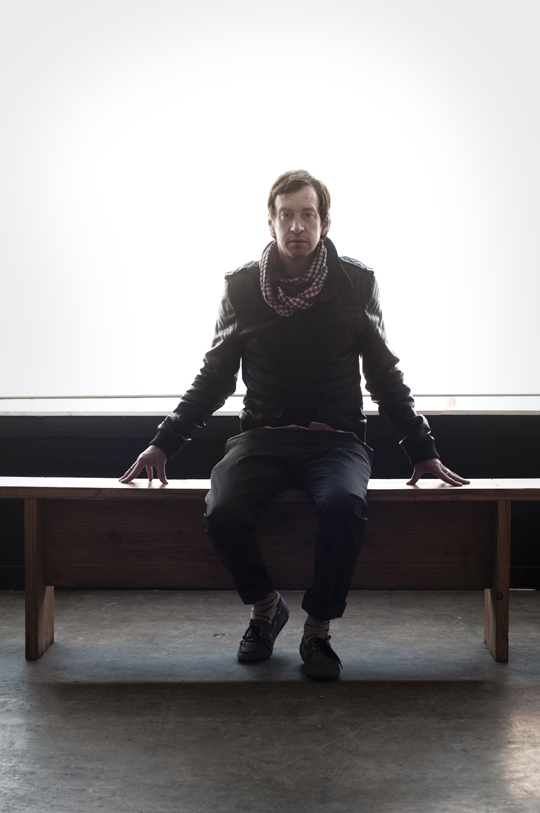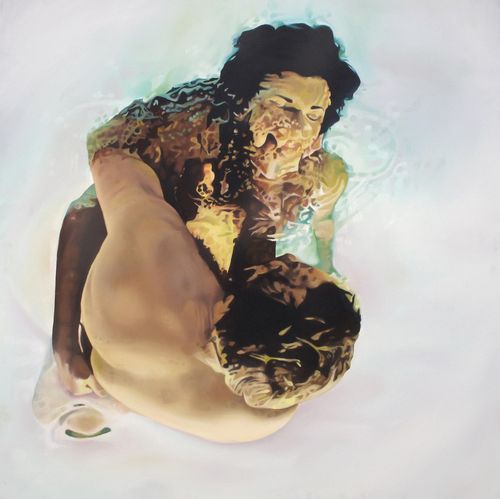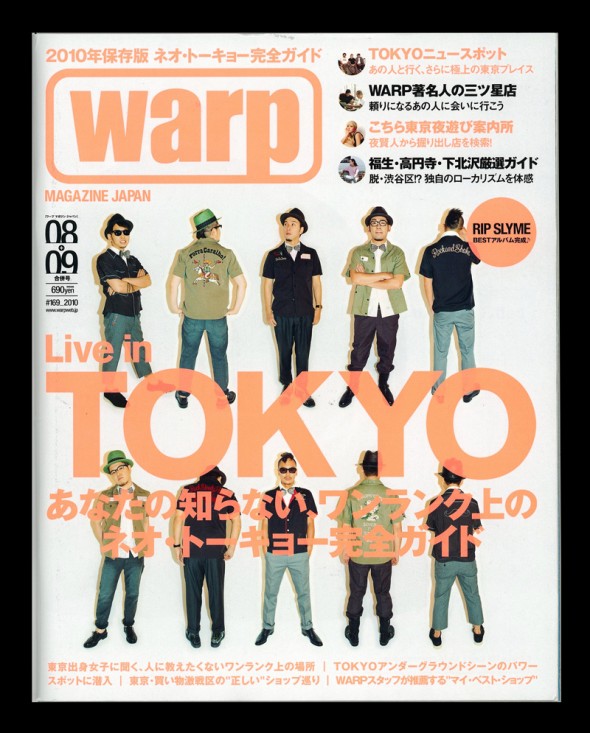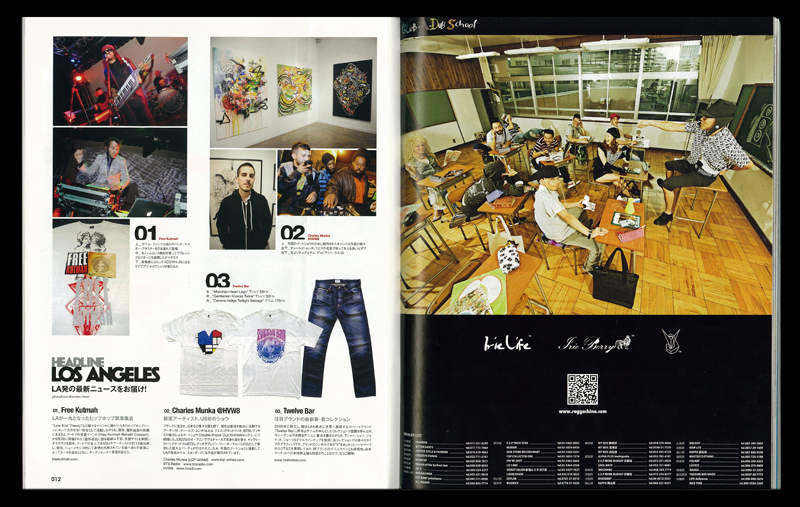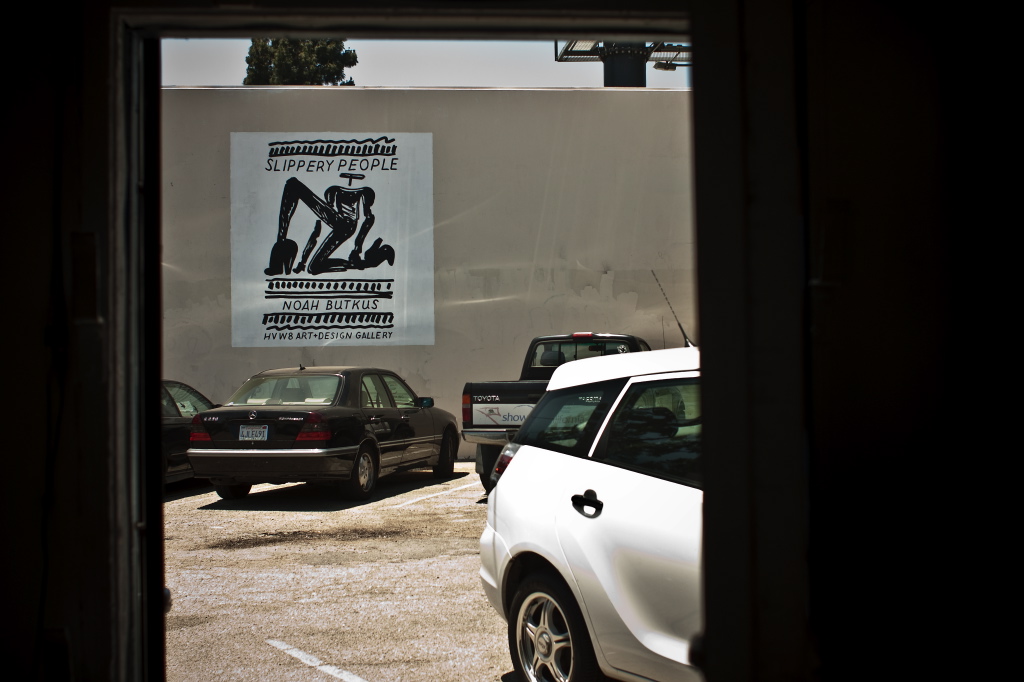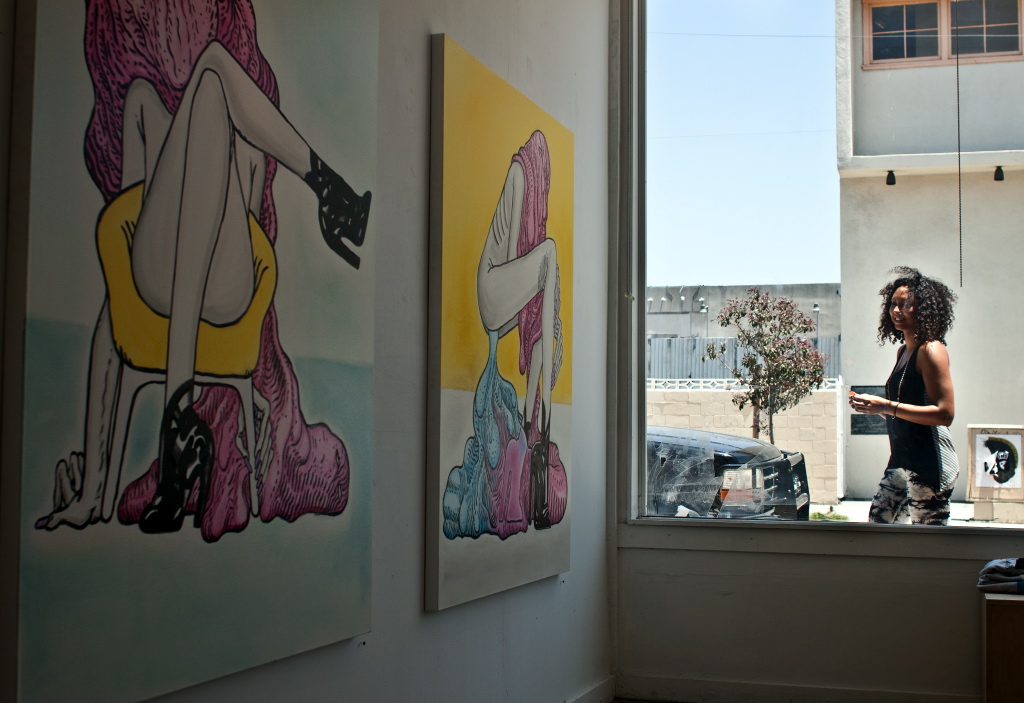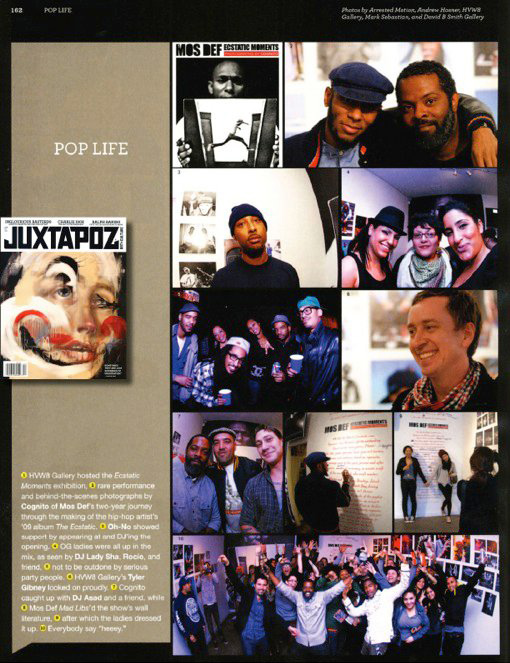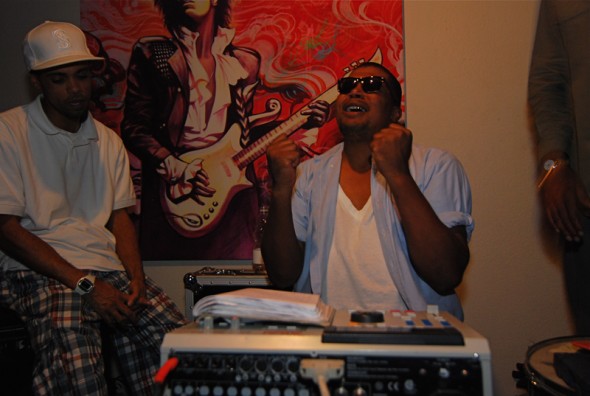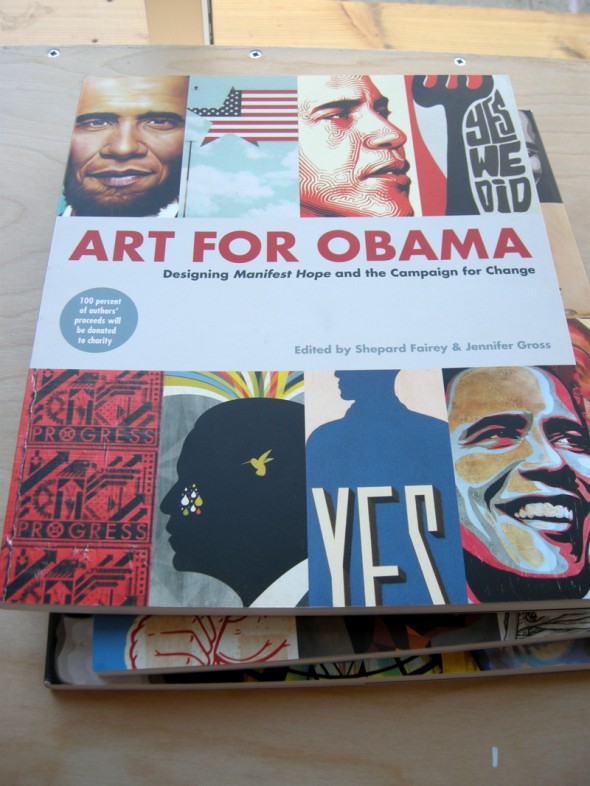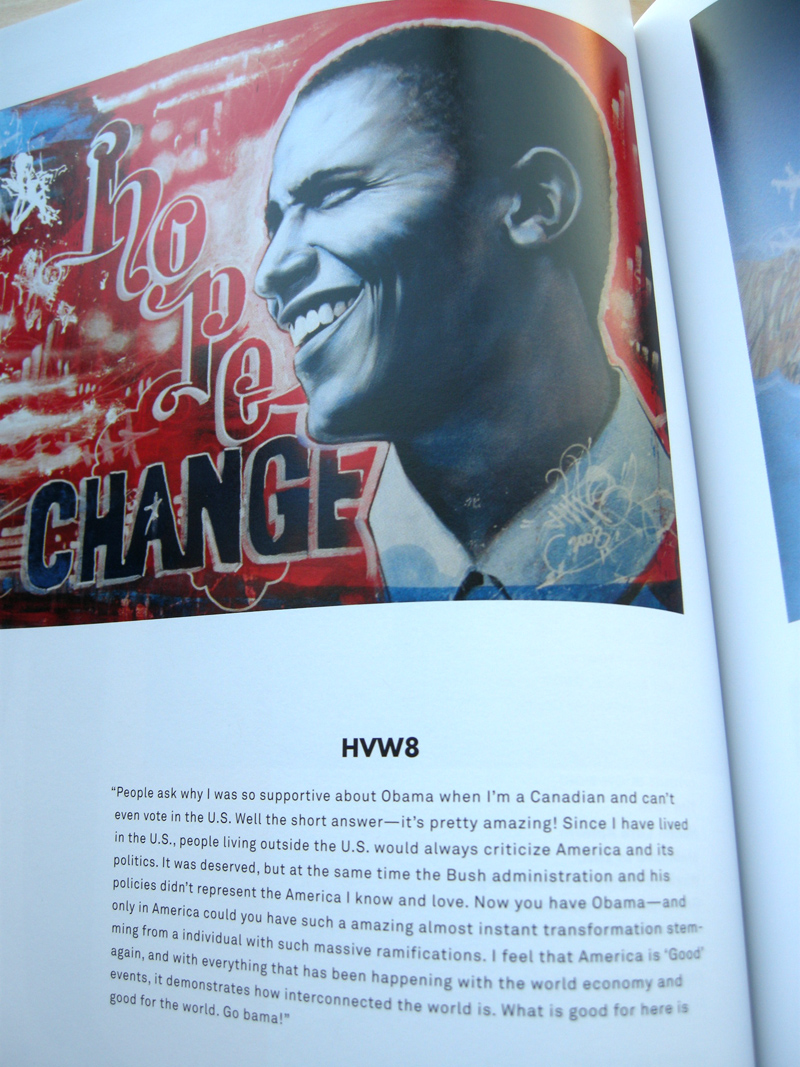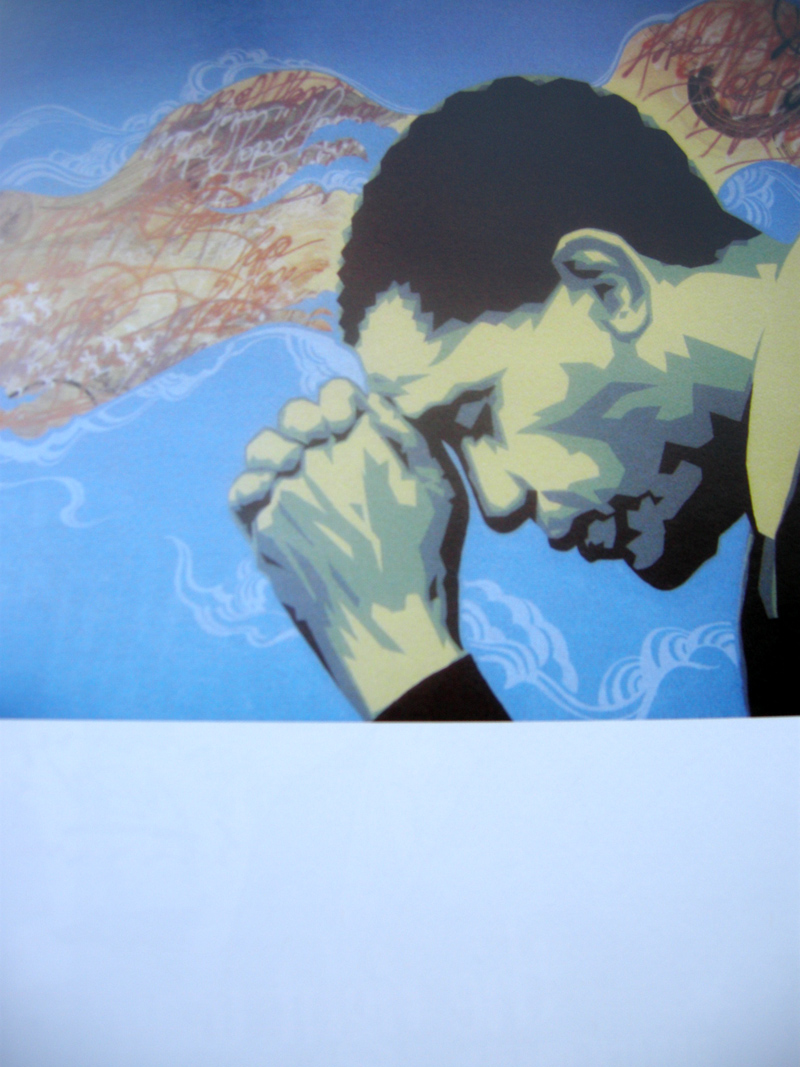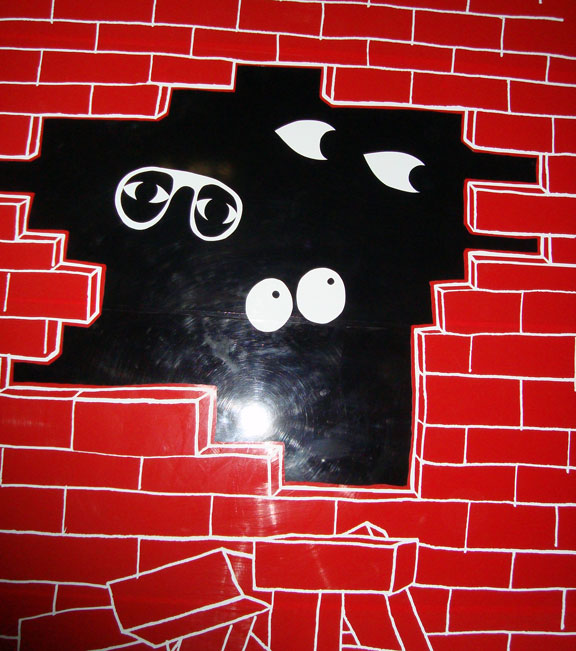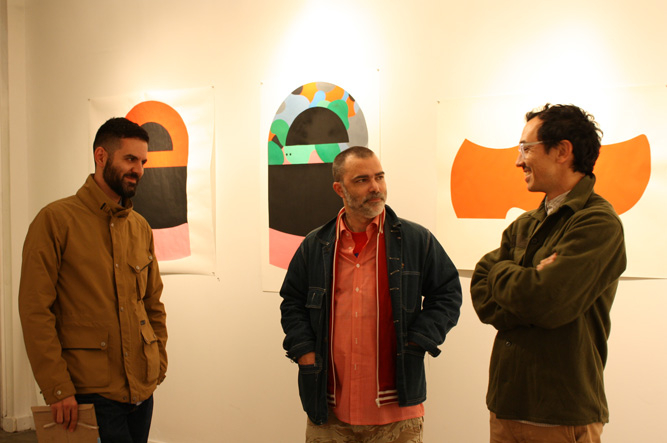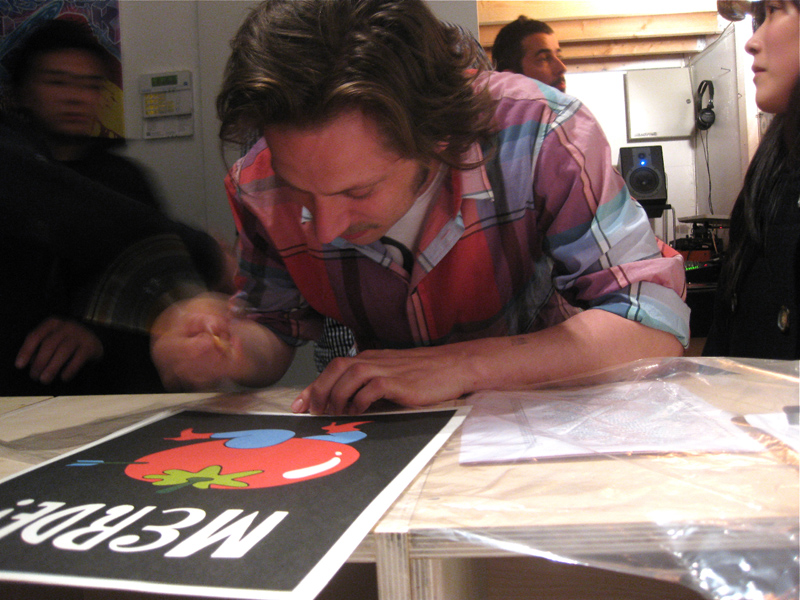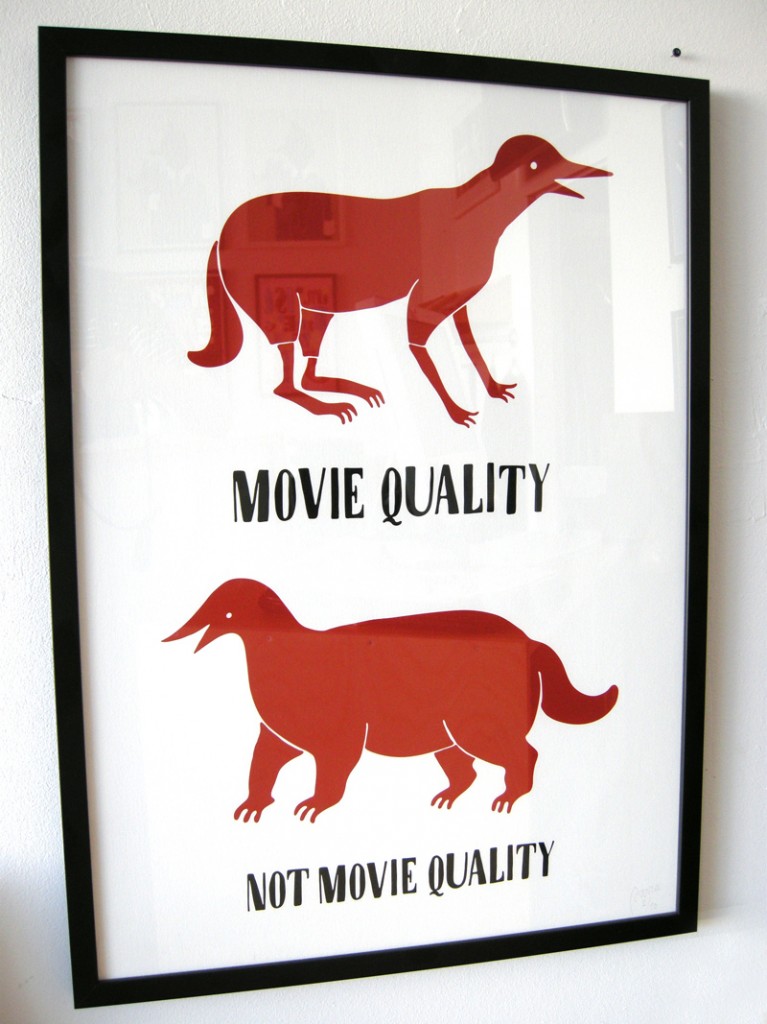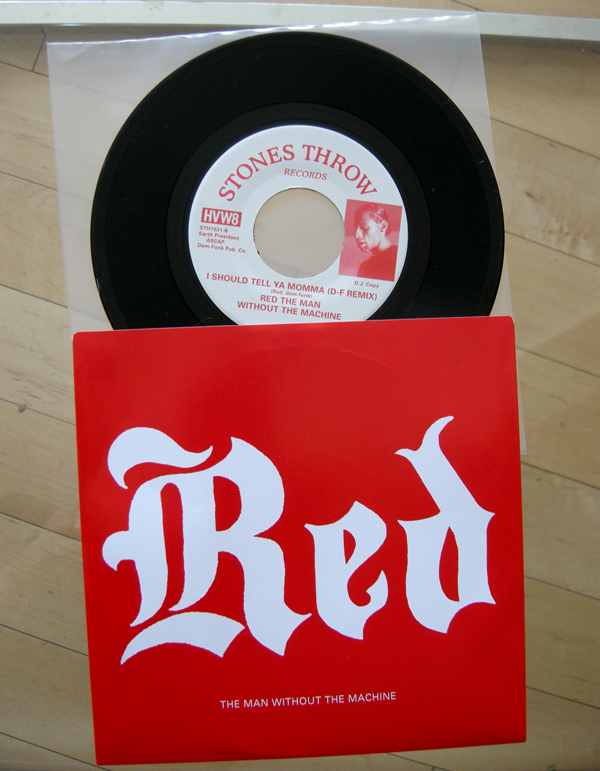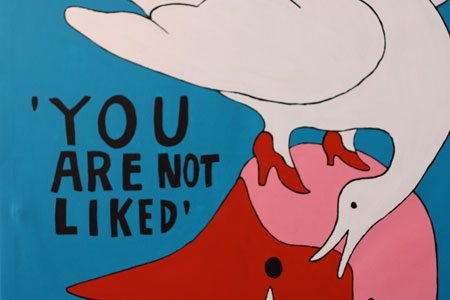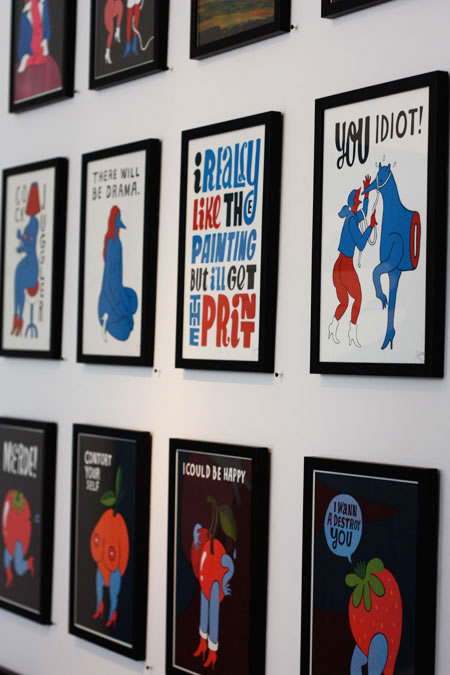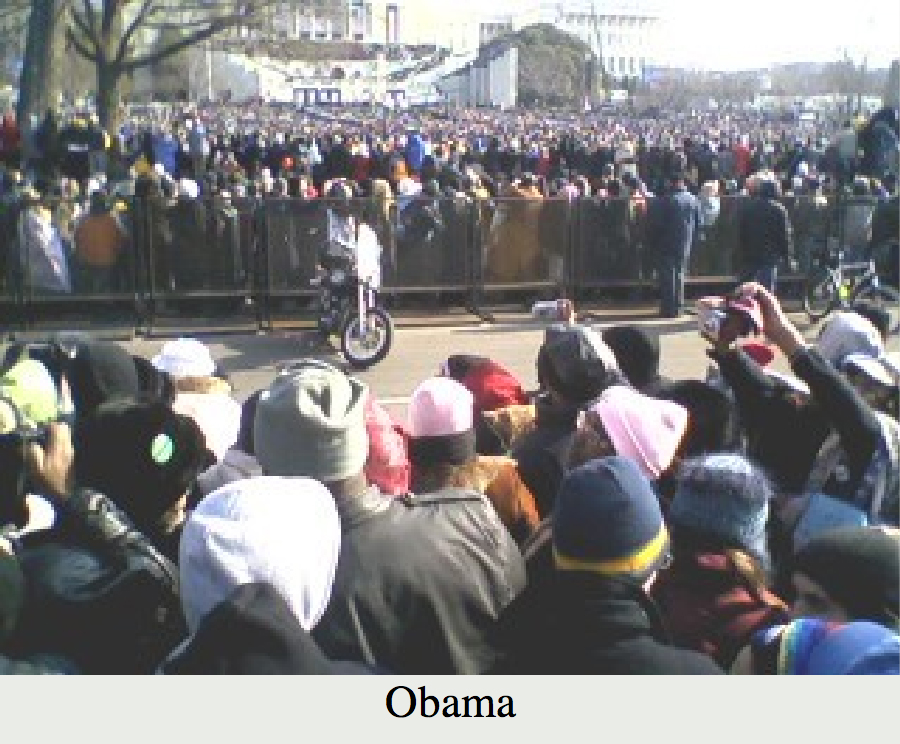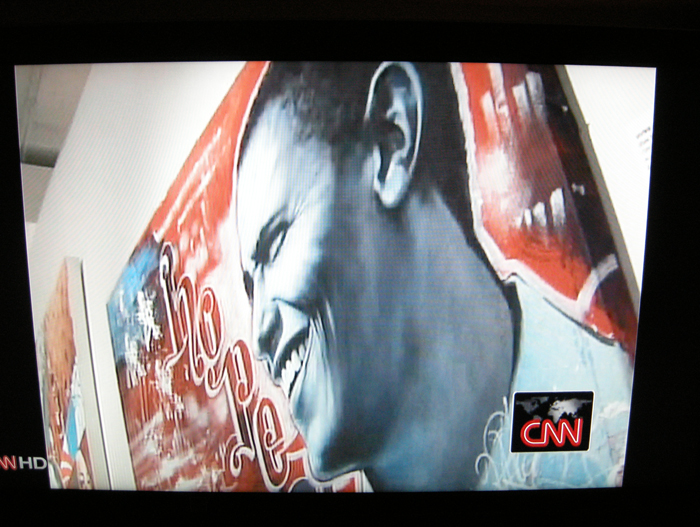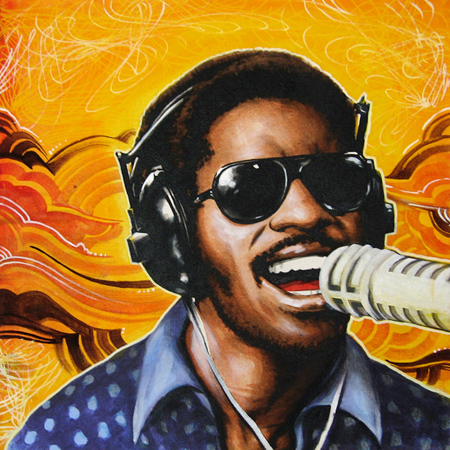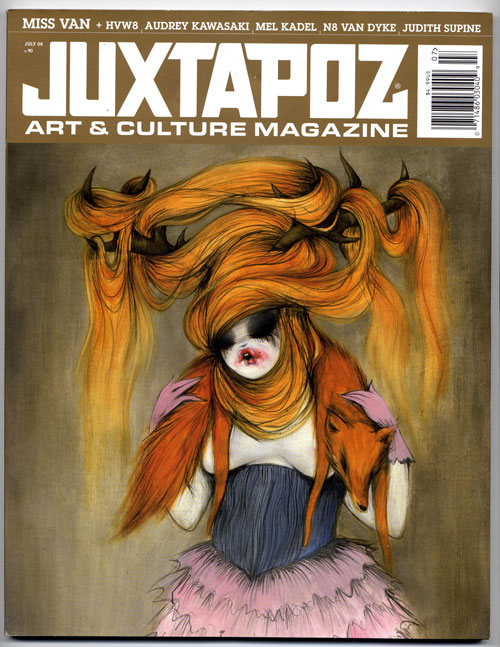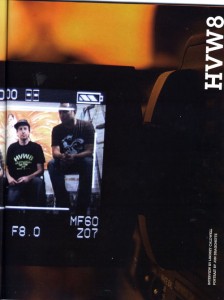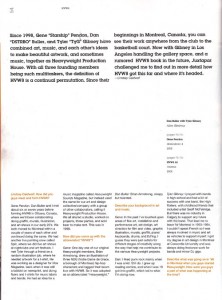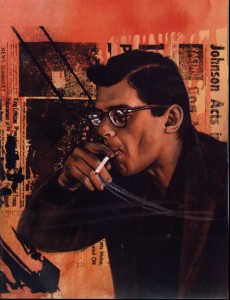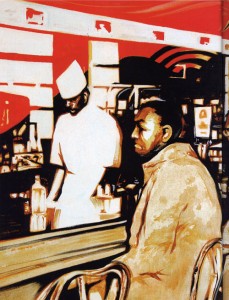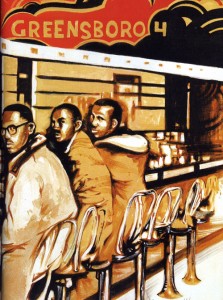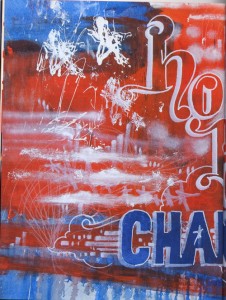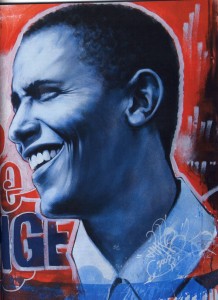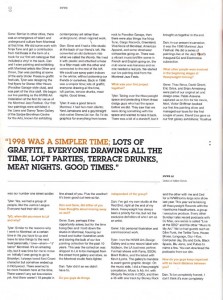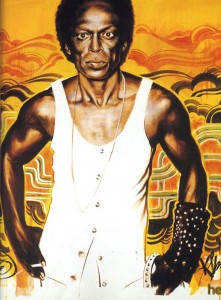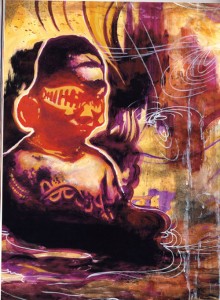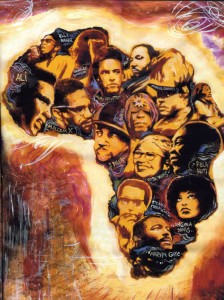Hassan Rahim ‘Distallations’ on Qompedium
Category: Press
Recent Rebel Cultures Press

Recent Interviews with Janette Beckman on the Rebel Cultures Exhibition from London’s Huck Magazine and NY based Complex Magazine.
Janette Beckman Interview and Rebel Cultures Exhibition Press
Interview with Janette Beckman on her Rebel Cultures exhibition at HVW8 from LA Weekly as well as recent press from Hayabusa (Japan), Complex (US), Purple Magazine (France), Jay Z’s Life + Times and more below.
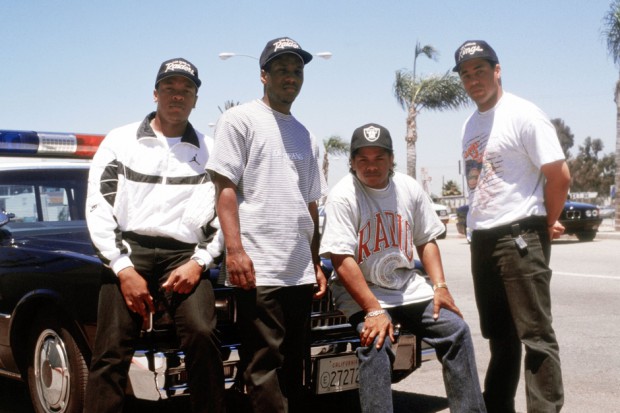
Dr. Dre, MC Ren, Eazy-E and DJ Yella of N.W.A. in 1990, near their studio in Torrance, California. Originally appeared in the book “Rap!” by Janette Beckman and Bill Adler.
Janette Beckman’s lens somehow always seems to always capture the intersection of gritty and cool. Born in London, England, Janette is a product of the ’70s punk movement. Like the music and lifestyle her art embodied, she soon crossed the ocean to New York, and has lived there since the top of the ’80s. Almost 35 years later, Janette has amassed portraits of rockers, rappers, painters, gangsters and more than a few would-be music moguls in the form of Rick Rubin, Dr. Dre and Russell Simmons. Regardless of who her subject is, Janette seems to find the honesty as well as the style in people. If the camera won’t show it, the jovial photographer’s anecdotes surely will. Beginning April 17th, select photos of Beckman’s are featured in HVW8 Art + Design Gallery (661 N. Spalding) in an exhibition called Rebel Cultures: Punks, Rap & Gangs, sponsored in part by Diamond Supply Co.
For the opening, Janette traveled back to L.A. 31 years after her first trip (prominently featured in the curation). Gallery goers included Curt Smith of Tears for Fears, Delicious Vinyl’s Rick Ross, and even three subjects that Beckman has bonded with since meeting them by chance a lifetime ago.
West Coast Sound: Much of your portrait work is often associated with New York. I’d like to talk about some of your L.A. photography. It’s in your book, The Breaks, and it’s prominently featured in this exhibit. This photo from 1983, “Gang Girls”; it’s such a moment in time. What prompted you to take that picture?
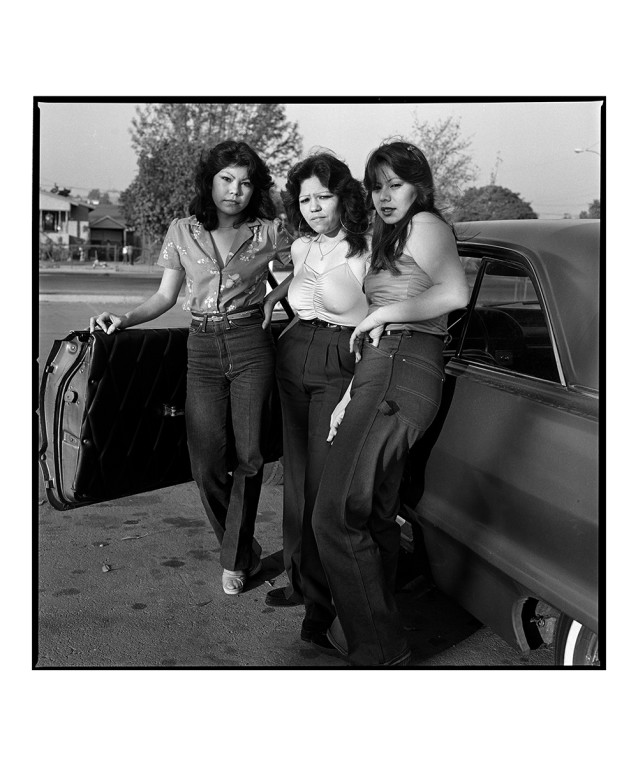
The “Riviera Girls,” then known as LA Happy Loca, LA Smiler Loca and LA Chrissy Loca, standing beside an early 1960s Chevrolet Impala in East Los Angeles. They reportedly attended Janette’s opening at HVW8.
Janette Beckman: In 1983, I was visiting a friend who managed The Go-Go’s, a seminal L.A. punk band. I just happened to pick up what I think was the L.A. Weekly, and read about this East L.A. gang, the El Hoyo MaraVilla. I loved the story so much, and there were no pictures. I just kind of got fascinated, so I got in touch with the writer and asked if he would introduce me to the gang.
Continue reading “Janette Beckman Interview and Rebel Cultures Exhibition Press”
Recent Janette Beckman Press – The New Yorker, The Telegraph (London) and New York Magazine
 Futura and Dondi, NYC, 1981 – 16 x 20 inch
Futura and Dondi, NYC, 1981 – 16 x 20 inch
Recent Press on Janette Beckman in New York Magazine, The Telegraph (London) and New Yorker Magazine.
Make sure to RSVP for this Thursday, April 17th’s opening at rsvp@hvw8.com. Janette’s Rebel Cultures runs until May 18th. Please email info@hvw8.com for inquiries.
JJJJound – Opening Ceremony
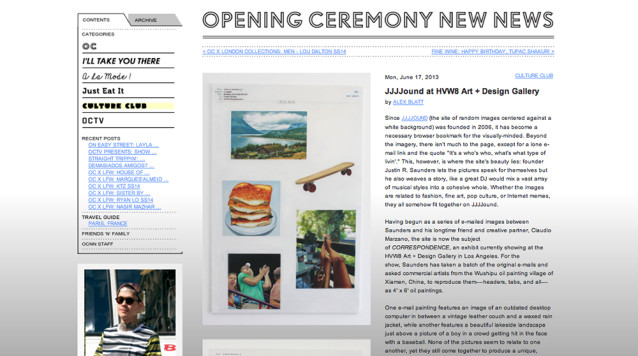
One e-mail painting features an image of an outdated desktop computer in between a vintage leather couch and a waxed rain jacket, while another features a beautiful lakeside landscape just above a picture of a boy in a crowd getting hit in the face with a baseball. None of the pictures seem to relate to one another, yet they still come together to produce a unique, mood board-like effect. In a world where the media with which we discover content are always changing, Justin shows how ideas can be shared and trends can be set without the need for large budgets or, in his case, words.
Through July 7, 2013
HVW8 | ART + DESIGN GALLERY
661 N. Spaulding Ave.
Los Angeles, CA 90036
MAP
“JJJJound Correspondence” feature on SFAQ
Installation view. Courtesy of HVW8 Art + Design Gallery
Installation view. Courtesy of HVW8 Art + Design Gallery
JJJJound, the scarcely worded, image based blog founded by Justin R. Saunders in 2006, is an internet treasure trove of the hip, off kilter and forgotten about. Unconventional beauties of all existences are juxtaposed in a clean digital format. This presentation of imagery is one that is informative while maintaining elegance and desirability. Presently, JJJJound has risen from the countless ranks, to be one of the answers to mindless online tedium for the inspiration seeking.
Installation view. Courtesy of HVW8 Art + Design Gallery
Installation view. Courtesy of HVW8 Art + Design Gallery
“JJJJound Correspondence”, showing through July 7 at HVW8 Art & Design Gallery is Saunders digital mood board aesthetic, reassessed for the gallery arena. What began as a series of emails with long time creative collaborator Claudio Marzano, evolved into commissioned works from junior commercial artists based in the Wushipu Oil Painting Village in Xiamen China. Entering HVW8, an enlarged email from Saunders to the proper parties in China inquires into the painting manufacturers capabilities, urgency of prompt delivery and acceptance of junior artisans as an economic impact to ultimate cost. The subsequent works measure in at 4’x6’, each a variation of design, complimentary sartorial options and the weird from the World Wide Web. What seems to be screen grabs from JJJJound posts is in fact the image collection via “correspondence” (if you will) between Marzano and Saunders. Framing the top half of each piece is an unmistakable email grid (with verbatim addresses and dates) that hovers over the pool of opaque white canvas. Below this grid, is the imagery shared between these two parties, placed harmoniously within the frame.
JJJJoud. Courtesy of HVW8 Art + Design Gallery
The transparency of vision and process is what makes “JJJJound Correspondence” so interesting. Scrolling through a blog or an email the aesthetically perfected balance of lines and typography is taken for granted. Rapid fire, relentless scrolling with few pauses for observation, the eye simply registers and continues on. The humanity visible within the oil paint replicas by a (competitive waged) skilled worker, forces the viewer to slow down and observe. Even these specialists well versed in the Old Masters’ dramatic technique, perform a shaky deed duplicating the perfected manifestation of technology. The concurrent (and slightly paradoxical) existence of each canvas and its digital inspiration is equally as fascinating. “JJJJound Correspondence,” address ways in which observation is conducted- how do you register familiar information when presented in differing ways? Ultimately, Mr. Saunders succeeds in an intelligent presentation that would be fundamentally impossible without the basis of its existence: the Internet.
For full article in SFAQ International Arts and Culture visit here.
-Contributed by Bianca Guillen
Parra Interview
Interview with Parra from Wertical
Parra
Whether it is an absurd photo that he comes across on the Internet or a book that he stumbles upon, it is the “everyday and the awkward” that inspires Dutch artist Piet Janssen. Whatever medium he works in, his style remains very much the same: human, yet abstract; plain, yet colored. And that hallmark is seen on canvas, in a sketch, a shoe, a sculpture, or even a laptop sleeve.
Janssen, who is more commonly known by his alias Parra, didn’t realize how successful he was until his first exhibition at London gallery, Kemistry, where his posters sold out. That was a watershed moment, and one deal soon followed another.
In tune with today’s embrace of all things glamour, pop and commercial, Parra’s signature style delighted the market and increased his exposure. Today, however, he is backing away from commercial jobs to focus on his independent artwork.
We met the 36-year-old illustrator in his studio in Amsterdam as he makes last-minute preparations for his upcoming exhibition at HVW8 Art + Design Gallery in Los Angeles. He gives us a glimpse into the selected works and shows us some of his earliest works, too.

Wertical: You’ve definitely found your calling. Can you recall how your artistic career began?
Parra: It was all by mistake and luck. I was 22 years old and was actually skateboarding professionally when I realized that this sport won’t be my purpose in life. Suddenly, I saw that I would never make a serious career with it. I was set for a change. At that time, I was enrolled at a sort of graphic design school, mainly to benefit from the money that the government pays all Dutch students. But it unexpectedly created opportunities: I was asked to do an internship. As I wanted to move from the south of the Netherlands to Amsterdam, I called some companies over there and finally ended up as a trainee in a small Internet bureau. This fired the starting pistol of my art career.
WE: Namely?
P: I learned to work with [computer program] Illustrator. My boss made me sit in front of a computer, handed me a can of Coca-Cola and said, “Re-make this logo.” It took me a month. But I finally learned how to work with it and noticed that Illustrator is a pretty cool program. I improved and began to offer my services. At that time; the internet era had just started to burst and I was super young and learned quickly. Then, a friend started to organize hip-hop parties in Amsterdam and asked me to do the flyers and posters. And from that moment on, one thing led to another. I used my saved up money form working at the Internet company and started to work for freelance.
WE: Were you a passionate drawer before starting the internship?
P: Well, I drew as a kid , of course, but it actually never mattered me. I was busy trying to be good at skateboarding.
WE: So it was a computer program that made you draw by hand?
P: In a way, yes. When I discovered that the flyers turned out boring when using preset typefaces, I started hand drawing – with Illustrator first, but that didn’t look good either. So I started to draw on paper and to paste these sketches into Illustrator. And in Illustrator, I trace them by hand anew.
WE: So you were an illustrator first. How did you then move on to art?
P: Somebody took notice of my flyers and posters and did an exhibition with me. I remember it very well: my posters were on sale for about 30 pounds. The show was sold out immediately. One year later, I came back and did another show. This time, the posters were a bit more expensive and sold out again. Around the time of my first show, I hooked up with London-based, Big Active, agency. They placed me a lot of illustration jobs for different clients; the assignments ranged from designing book covers to big advertising campaigns for beer companies. It was all very good stuff – I learned a lot from that.

WE: Did you regard your work as art at that time?
P: Not really. I started to make more and more of my own works – jobs are jobs, but I wanted to draw what I like. At that time, my own clothing company, Rockwell, that exists for ten years now, served as the only way out for my weird personal work. It was a smooth transition from doing commissioned jobs to doing exhibitions.
WE: You are indeed known for your collaborations. Nike, Stüssy or Incase are just a few brands that you worked with.
P: Yes, that’s true. It was an exciting time for me, but even the companies endorsed me to do my own thing. Compared to a few years ago, I don’t do many collaborations today – only if good ones come around. As for instance the one between Pendleton Wooden Mills and me, which was curated by Arkitip. It was really nice doing that and a great product came into being.
WE: As the art world becomes more commercial, it’s become more common to invite collaborations. Do you think art and commerce can co-exist?
P: I think these days, something commercial can be art and the other way around too. It’s a result of our generation. We are commercial; we grew up surrounded by thousands of advertisements and it was probably unavoidable.

WE: True. How do you classify your artworks?
P: My classification is a difficult topic for me, which makes me stuck for an answer. People like to class it as street art, but I wouldn’t say so. Maybe as flat graphic art? But my sculptures are not flat though…
WE: But your background is from the streets. Skateboarding is certainly part of hip-hop and street art culture.
P: Yes, kind of. I was also DJing; I did a lot of stuff that people like to phrase as urban but it’s not a theme within my artworks at all.
WE: A lot of artists are classed into a certain category even though they come from a different background. Would contemporary be a better description for your work?
P: Yes, this term feels good.
WE: Did you ever attend a drawing course?
P: No, you get better and better by doing. What is the rule – 10,000 hours of practice? I think I hit this edge already. Some people even complain that I always do the same thing. But this is not true. Well, the themes didn’t change, but my style changed as I improved.
WE: What are your themes?
P: Irony, humor and sexual issues that I like to exaggerate. All my artworks also involve a little bit of self-reflection. In brief, I would say they are about the weird, the everyday and the awkward.
WE: Displayed abstractedly.
P: Exactly. Using a bird face instead of a human head makes the artworks less in-your-face.
WE: Your father is an artist as well. Are his works similarly abstract?
P: Yes, definitely. He is painting with oil and making sculptures out of wood.
WE: Is he your source of inspiration?
P: Definitely. Especially his paintings of naked women.
WE: The proportions of his figures are simultaneously disproportional.
P: Yes.
WE: And he portrays birds in his paintings as well.
P: Yes, but this is something that he stole from me! As well as the heels! {Laughs}

WE: So it is a give and take?
P: Well, yes. But I didn’t look at his paintings to copy the details that I like. It happened subconsciously. I grew up with them. But yes, he is a big influence.
WE: Because your exhibitions take place in museums and galleries all over the world, you travel a lot. The U.S. is a particularly important market for you. Did you ever think about moving there?
P: No, I will surely stay in Amsterdam. I would certainly like to have the L.A. weather and lifestyle here, but I wouldn’t like to be in America all the time. I like to visit.
WE: Which lifestyle are you speaking of?
P: The sun, the food and the skateboarding. And I like the fact that people have space – gardens or even a bit of land in California.
Parra opens at HVW8 Art + Design Gallery Sept. 29th
Respect the Shooter: Lisa Leone featured on Jay Z’s Life + Times.
Interview with Lisa Leone from Life and Times.
Bronx-born photographer and filmmaker Lisa Leone came of age in the 1980s with hip-hop and a camera. Leone is revisiting her early portraiture work in a solo exhibition on view at the HVW8 Gallery in Los Angeles through June 10. Her candid portraits capture iconic hip-hop artists at the early stages of their careers including Snoop Dogg, Lauryn Hill, Mary J. Blige and A Tribe Called Quest.
For Leone, these portraits were only the beginning of her work as a cinematographer. She has shot music videos for TLC, D’Angelo and The Brand New Heavies. Leone was mentored by Stanley Kubrick on the film Eyes Wide Shut, and has gone on to direct the films Exactly, Good Morning Baby, and the documentary Just For Kicks. She co-directed Woinshet, with Marisa Tomei and shot the film in Ethiopia. Most recently she was the cinematographer on director Nancy Savoca’s 2011 film Union Square, which premiered at the Toronto Film Festival. Leone spoke with Life + Times about her roots in New York hip-hop culture and her upcoming film and photography projects.
Life+Times: How did you first become interested in photography and filmmaking?
Lisa Leone: I became interested in photography at a very young age. My uncle set up a darkroom in his bathroom, so at the age of eight I developed my first photo with him. It was a black-and-white photo of me sitting on a carousel in Central Park.
L+T: You grew up in the Bronx. What drew you to document the New York scene in the ’80s and ’90s?
LL: I moved to Manhattan when I was 15 and went to the High School of Art + Design, otherwise known as high school of graffiti and breakdancing. MARE 139, FABEL, WIGGLES and DOZE were some of the legends to come out of there. I majored in photography so I just started to shoot my friends. When [breakdancing crew] Rock Steady began to tour they needed photos, so they asked me, from there it branched out.
L+T: How would you describe the aesthetic of your work then and now?
LL: My work now is very different, but the same feelings do come through. People have described the work as intimate, raw, while bringing beauty through.
L+T: How did you start shooting for Vibe and British Vogue?
LL: I was on Snoop’s first video “What’s My Name,” which Fab 5 Freddy directed. It was my first time in Long Beach and my first experience with LA gangs. In the middle of shooting the video there was a shootout. People scattered everywhere; helicopters flew overhead. Fab and I ran to my car and took off. Filming resumed three days later, at an interior location. When I got back to New York I wrote about it, then showed the photos to Rob Kenner at Vibe. He published the article and photos. From there it became a monthly column lasting two years. British Vogue started with a photo of Shabba Ranks I took for them.
L+T: What is your most vivid memory of your time working with your mentor Stanley Kubrick?
LL: So many amazing memories and learning experiences, like learning how to light with practicals. We would stay at the studio until 2 am testing different lamp scenerios with his Arri 2C. I (remember) his sharp, witty personality, his teachings on producing and being economical with budgets, to us getting to a set and him saying “I don’t know what to do.” That was a huge lesson — to be confident enough to say “I don’t know”.
L+T: At the time you took these photos, were you aware that you were documenting history?
LL: I still look back and can’t believe where the culture went. I never thought of it as documenting history. I was just capturing moments of creativity and beauty. I always loved photographing artists, whether they’re musicians, painters, filmmakers. When I was young I was obsessed with the photographs of Arnold Newman.
L+T: You said that you used Leica M6. Was this the camera that you always used?
LL: I had two Leicas and still do, an M6 which I’d keep color film in and an M4P which I’d use for black and white. I love using the Leicas because they’re small, quiet and not intimidating. I think it let’s people open and become more relaxed, or it can have the opposite effect like when I shot Big Daddy Kane and he made fun of my M6 because it wasn’t big and flashy. Little did he know.
L+T: How did you decide which photos to include the exhibit?
LL: It was extremely hard to pick which photos to use. I scanned a bunch and made little 4×6 prints, which I played around with for a year, showing people, looking at. Finally I said, “ok, this is it.” I enlarged the ones that spoke to me, brought me back to a particular memory, very personal. There are many more. They’ll just have to wait until the next show.
L+T: How has your process changed over the years, and been influenced by the film work?
LL: My process has definitely been influenced by my film work. When I work with someone now, I work with them as if I were directing them as an actor in a film, to bring out a particular feeling or emotion. We’ll both decide on the feeling and then I’ll work with them to hold that feeling. Also, how does the camera see a particular feeling and emotion, the lens, angle, light. When it all comes together it’s quite powerful.
L+T: Your film Just for Kicks documents another aspect of culture — the style. Do you have plans to revisit hip-hop culture in film work?
LL: Yes, I co-created a story with Matt Levy and am producing a feature called “Once Upon a Rhyme” starring Rakim. We hope to begin filming later this year.
L+T: What are you working on next?
LL: As far as the photography goes, I’m working on a series of women artists, investigating the complexity, beauty and rawness of real feelings within women. I also have another film in development about love, family and sex in the Bronx.
Past & Present
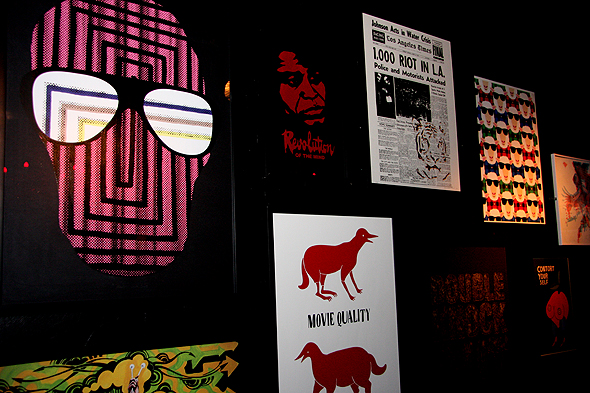
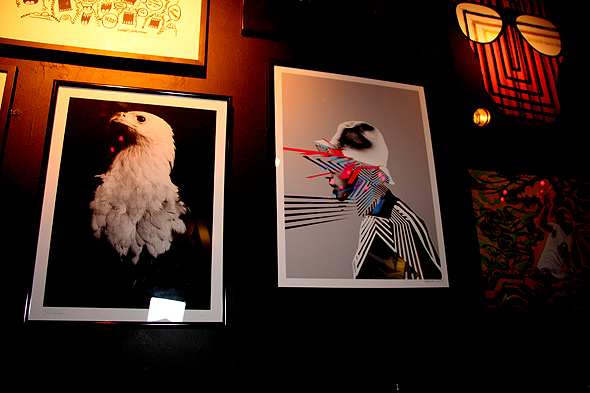
Here is an excerpt from an interview with HVW8’s Tyler Gibney on Hi-Fi’s recent acquisition of number of pieces from the HVW8 Gallery.
CF (Vanessa Conley): What can we expect from this collection of artists?
The Hifi acquired a number of pieces and prints from the HVW8 Gallery. This represents a good cross section of what the Gallery is about, with a mandate of representing avant-garde graphic design; Some of best international artists of this genre.
‘Past & Present’ is the theme of the collection. What does this entail?
HVW8 started in a golden era of Montreal in 1998. In 2005 we opened the Gallery in West Hollywood. This represents pieces from the past 14 years to present. The artwork ranges from myself, HVW8 Art Collective to number of past alumni at the HVW8 Gallery.
How does the aspect of music contribute in this collection?
We’ve always had music and music artists at the Gallery … Mos Def, Snoop Dog, Mayer Hawthorne, Master Blazter have all done things at the space, as well a number of bands were created during live recordings at the Gallery. Art and music have a symbiotic relationship – aural and visual, but the process is the same, so I think there is context for the two to live together, and I try to do that at the Gallery. These pieces reflect this.
What can this HVW8 installation bring to Calgary to help develop the local arts scene?
I’m from Calgary, went to Montreal, ended up in Los Angeles and now I’m back here, all through art and music.
Art can be a very difficult term to define. What is art to you?
Art is a mediation and reflection of life. Art is the times.
Can you explain how HVW8 Art Collective works?
We started off as three guys coming together creating live pieces and we were lucky to travel around the world. We had installations and exhibitions in cities such as Tokyo, Munich, London, Amsterdam, New York, Miami, San Juan, Puerto Rico to name a few. We were the first ‘Art Band’ creating pieces collectively.
###
Geoff McFetridge in Los Angeles Times Magazine
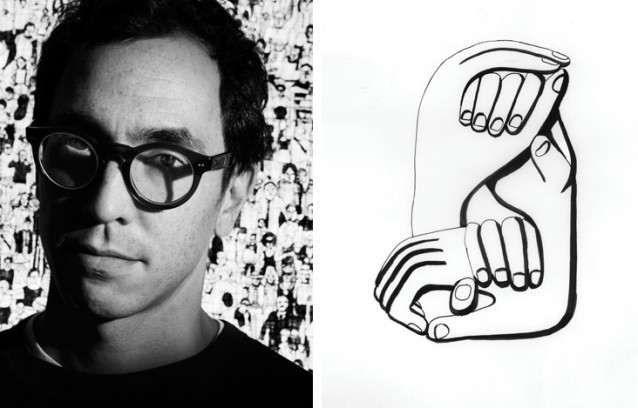
Geoff McFetridge is featured in this week’s LA Times Magazine for his upcoming collaboration with Heath Ceramics.
See more of Geoff’s work at this Friday’s ‘We Was Them Kids …” Group Exhibition.
Marc McKee – Seen/Unknown Exhibition and Book Release – March 19th
MARC MCKEE EXHIBITION AND BOOK RELEASE
at HVW8 ART + DESIGN GALLERY
MARCH 19th, 2011
Show Runs March 19th to April 10th.
Book signing from 7:30-8:30pm.
RSVP : Marc_McKee_Opening@hvw8.com
Marc bio:
In 1989 Marc McKee started creating skateboard graphics for World Industries and many of its subsidiaries, like Blind, 101, Menace, A-Team and Almost. Spearheaded by McKee, this era is considered the golden age of skateboard art, touting funny and offensive graphics that were hugely popular then and remain so today. McKee was also the editor of Big Brother Magazine during its first four years and later worked on the Blunt Snowboard Magazine, before selling both to Larry Flynt Publications. Today, McKee continues to make art for skateboard companies.
Book info:
The Art of Marc McKee marks the first installment of the Seen Unknown series edited by Winston Tseng, art director for Enjoi Skateboards. Tseng has worked with some of today’s most genre-defying visual artists and designers whose work extends well beyond skateboard culture. From sneaker and apparel design to product packaging, posters, high-profile ad campaigns, and fine art galleries, the work of Seen Unknown artists is often recognizable, though their creators’ names remain unknown—until now. With Seen Unknown, Tseng unifies the diverse range of work by some of his favorite artists, putting it all in once place for readers to enjoy.
Exhibit info:
The exhibit will consist of a selection of McKee’s personal favorites from over 20 years of legendary skateboard artwork. From old classic decks to new limited edition prints to never-before-seen original drawings and paintings, McKee’s work is a must see for skateboarders and art enthusiasts alike.
Gallery Info:
HVW8 Art + Design Gallery represents and facilitates the spirit and collaboration between art, music and design. In 1998 Tyler Gibney founded HVW8 in Montreal and in 2005 he and Addison Liu opened HVW8 in Los Angeles. With a focus in supporting avant-garde graphic design, it soon became the premier underground gallery in Los Angeles and over the past three years has featured artists such as Parra, Geoff McFetridge, Kevin Lyons, Ed Templeton, Lance Mountain, Mos Def with Cognito, Charles Munka, Michael Leon and Alvaro Illizarbe.
Tyler Gibney on Mondette
Gray Day review in Los Angeles Times
Noah Davis’ Gray Day reviewed by Christopher Knight in the LA Times.
‘Look Mom, No Talent’ – Gray Day satellite now showing at HVW8 Gallery.
Warp Magazine Japan
Noah Butkus at HVW8 Gallery on Hypebeast
Photos by Andrew White for Hypebeast on the Noah Butkus’ ‘Slippery People’ exhibition currentley at HVW8.
More photos after the jump.
Juxtapoz Pop Life / Mos Def Ecstatic Moments opening night
Images from the opening night of Mos Def Ecstatic Moments exhibition at the HVW8 Art + Design Gallery in this month’s Juxtapoz Magazine’s Pop
Hawthorne Headhunters on Gilles Peterson’s top of 2009 BBC
HVW8 and Hawthorne Headhunters make Gilles Petersons BBC best of 2009!
Follow HVW8 on Twitter
Download Hawthorne Headhunters from iTunes HERE.
I Ced and Coutrain from the Hawthorne Headhunters will be performing at the HVW8 Gallery this Saturday from 2 – 6pm.
The Art for Obama
Finally received a couple copies of the “Art Of Obama” book featuring artwork in support of Obama for the 2008 Presidential election including work from the HVW8 Art Installation.
100 percent of the proceeds go to charity. You can order directly from the publishers website.
There’s also a few of the HVW8 Obama prints left in the online shop.
Michael, Kevin and Geoff Exhibition Reviews
photo from Kitsune Noir
photo Star Graphics
The current show Michael, Kevin and Geoff, received a lot of blog attention. Below is a sampling of photos and reviews. The show continues through December 20th, at the HVW8 Art+Design Gallery. Purchase artwork HERE.
Blog Roll –
Parra in The New York Times
Parra’s Berlin show gets a write up in the New York Times.
Red Review
HVW8/Stones Throw RED 45
HVW8 and Stones Throw records collaborate on a 45 for Red. Features original version and the Dam-Funk remix.
More information HERE
Also available on the HVW8 Online shop and at the physical gallery.
Recent Red links:
HVW8 records upcoming
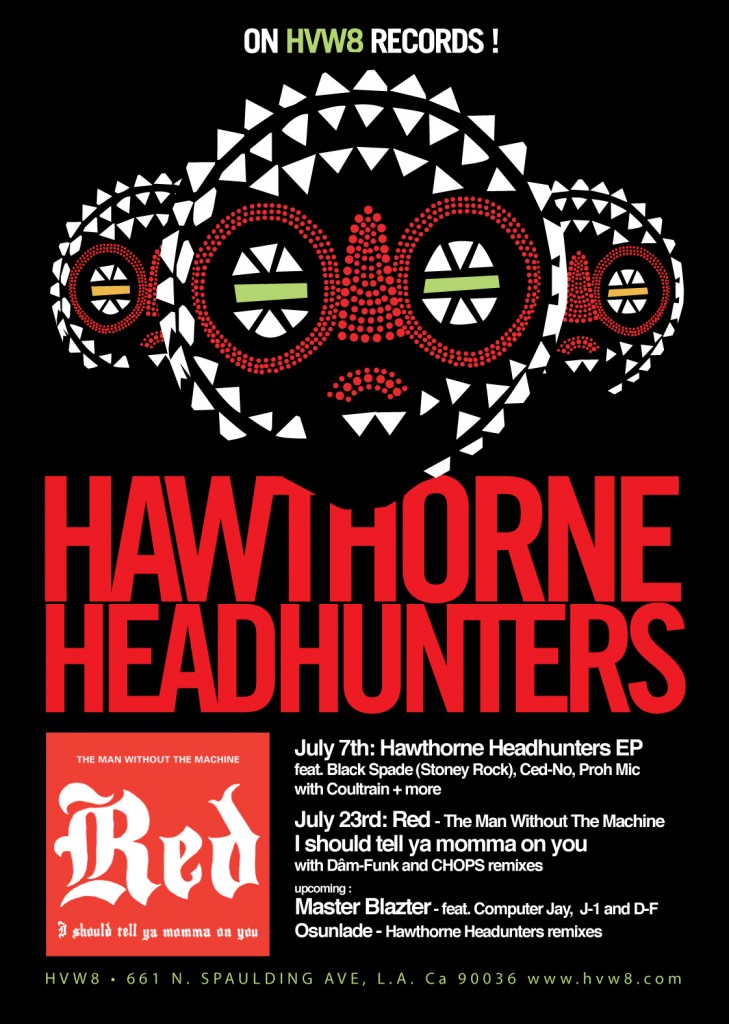
Mark you calendar !!
Red and Roger Troutman
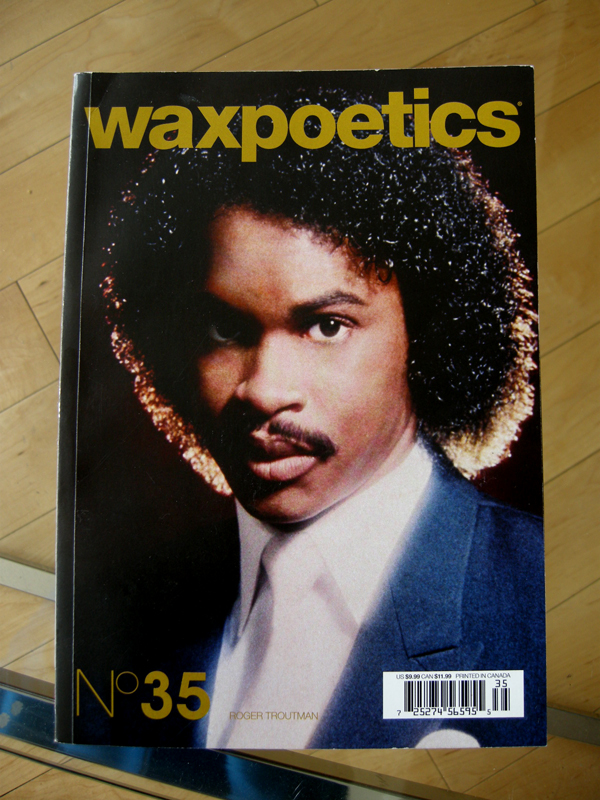
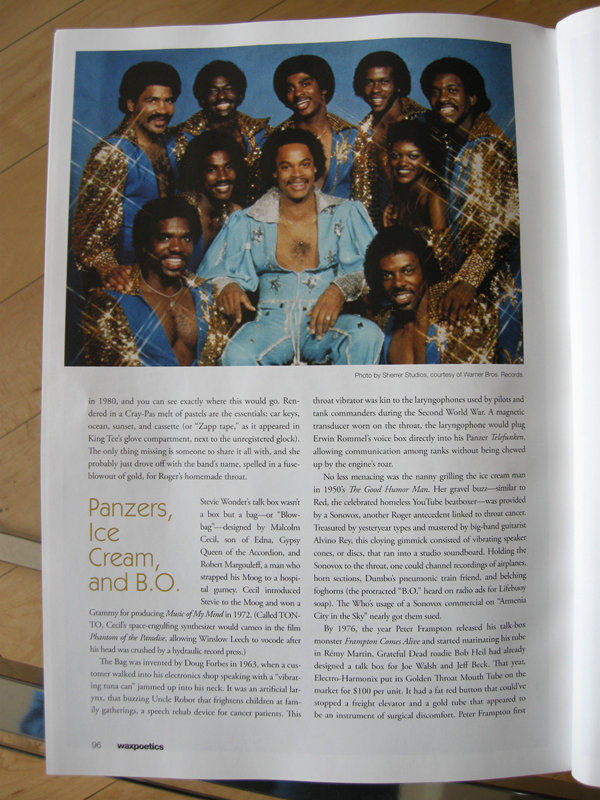
Red (the man without the machine) get’s a nice nod in the most recent Wax Poetics article on Roger Troutman.
Look for Red’s single to drop shortly, with remix’s by CHOPS and Dam-Funk.
Check back for details.
I heart JP
[Gallery not found]
Art + Design Gallery and the Parra exhibition get some lovin’ in Japan’s Warp mag.
Parra at HVW8 in Juxtapoz
HVW8 on CBC
HVW8 on CNN
The HVW8 Art installation Obama piece was featured on CNN today. It is current on display at the Manifest Hope show in Washington D.C. group show with 15 other artists. The show has received over 4000 visitors in the past 3 days.
Format Magazine
Here is a recent article with Dan Buller and Gene Pendon in Format Magazine.
HVW8 in Juxtapoz
Big thanks to our friends at Juxtapoz for the HVW8 feature, have a look or even better go buy it at your local news stand. Here it is …. article by Lindsey Caldwell.

